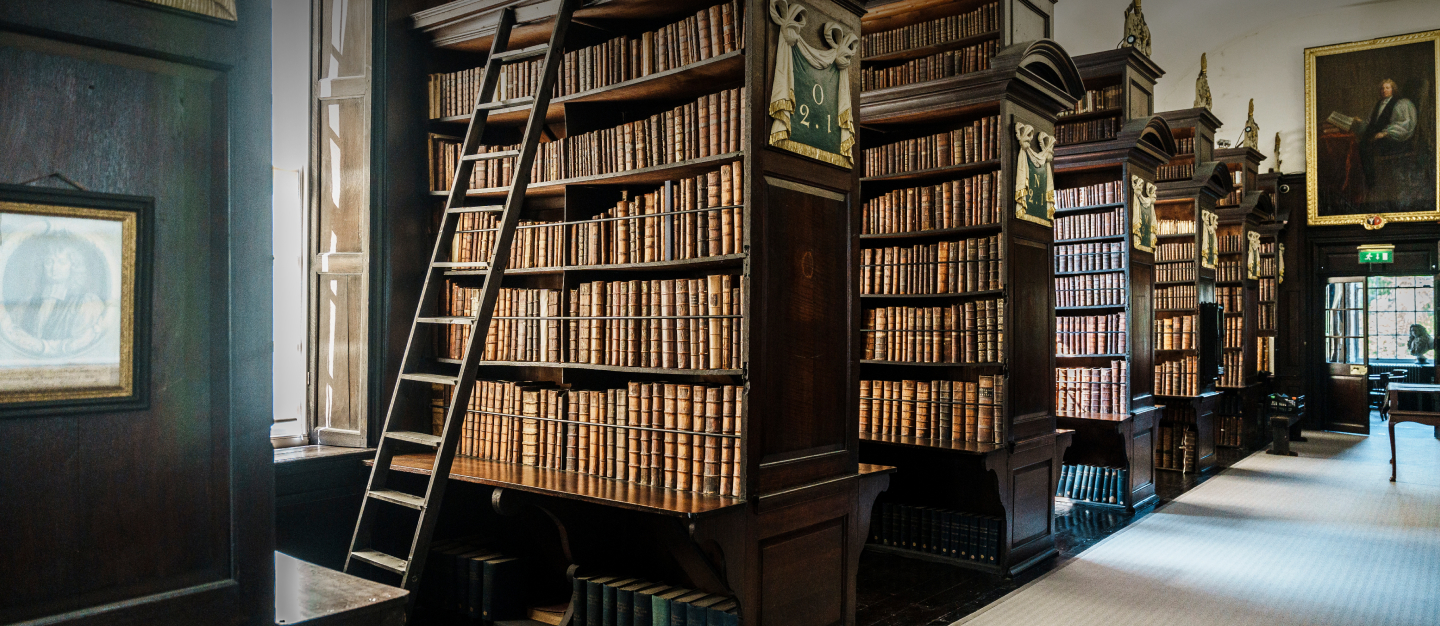
Meeting with a Remarkable Manuscript in Dublin
Dr Laura Cleaver tells us about a remarkable find among our medieval manuscripts
The collection of medieval manuscripts at Marsh’s Library is not well known. It is a small collection, with fewer than twenty separate volumes, as well as fragments retrieved from bindings, and was last catalogued in 1913.
The collection is thus long overdue for reappraisal, and it is turning out to be full of surprises. For example, the manuscript catalogued as “Julii Caesaris Commentaria, vellum (15th cent) 210 fols., 30.8 x 21 [cm]”, is a copy of Julius Caesar’s Gallic Wars made in the mid-fifteenth century, probably in Rome or Florence, with a handsome opening page including an initial and border of white vine decoration. It has two coats of arms, which although erased are still legible as those of the king of France and Cardinal Alain de Coëtivy (1407-74).
The Coëtivy family, whose lands were in Brittany, are well known for their interest in manuscripts. Indeed, Dublin is home to a second manuscript owned by Alain, the Coëtivy Hours, which is currently on display at the Chester Beatty Library.
My identification of the Coëtivy arms with their alternate black and gold bands (fascées d’or et de sable) topped with the cardinal’s hat, allows the Marsh’s manuscript to be added to the ten other manuscripts known to have belonged to Alain, who was made a cardinal in 1448.
Alain’s arms are painted over part of the border, whilst the French royal arms occupy the usual position for owner’s arms in the middle of the lower margin. It, therefore, seems likely that the manuscript originally belonged to either King Charles VII (1403-61) or his son Louis IX (1423-83).
Alain and all of the Coëtivy brothers served the French kings, and it seems plausible that the manuscript at Marsh’s Library was a gift from either Charles or Louis. After Alain’s death in Rome in 1474, his goods were seized by the Pope’s nephew. His manuscripts seem then to have been dispersed, and a subsequent owner presumably attempted to remove the two coats of arms. How the manuscript came to Dublin remains a mystery, but one that I intend to solve.
Dr Laura Cleaver
Trinity College Dublin
Further reading:
D. E. Booton, Manuscripts, Market and the Transition to Print in Late Medieval Brittany (Farnham, 2010).
R. Harrouët, ‘Une famille de bibliophiles au XVe siècle: les Coëtivy’, Bulletin et Memoires de la Societe Archeologique du Departement d’Ille-et-Vilaine, 102 (1999), pp. 139-200.








